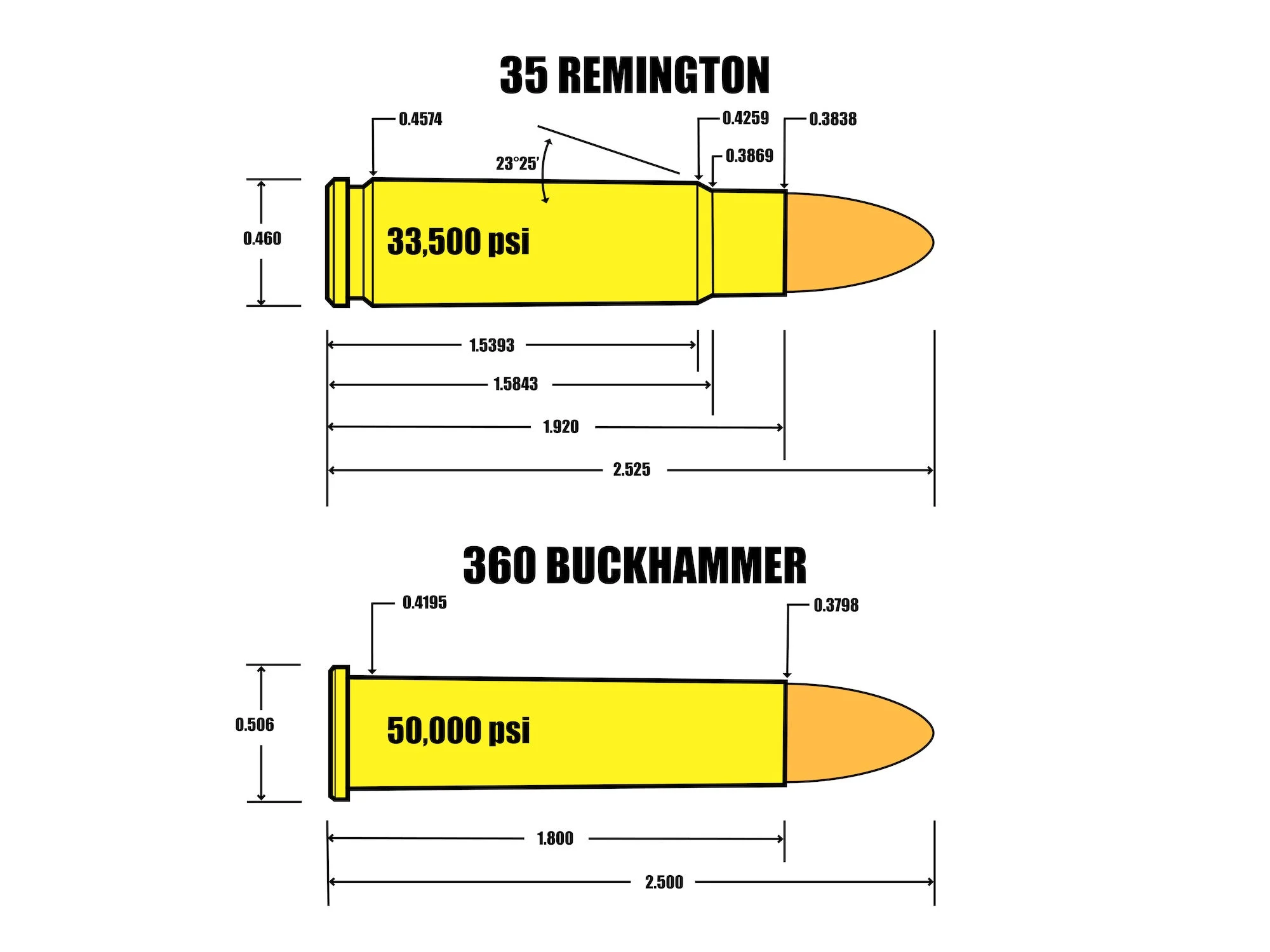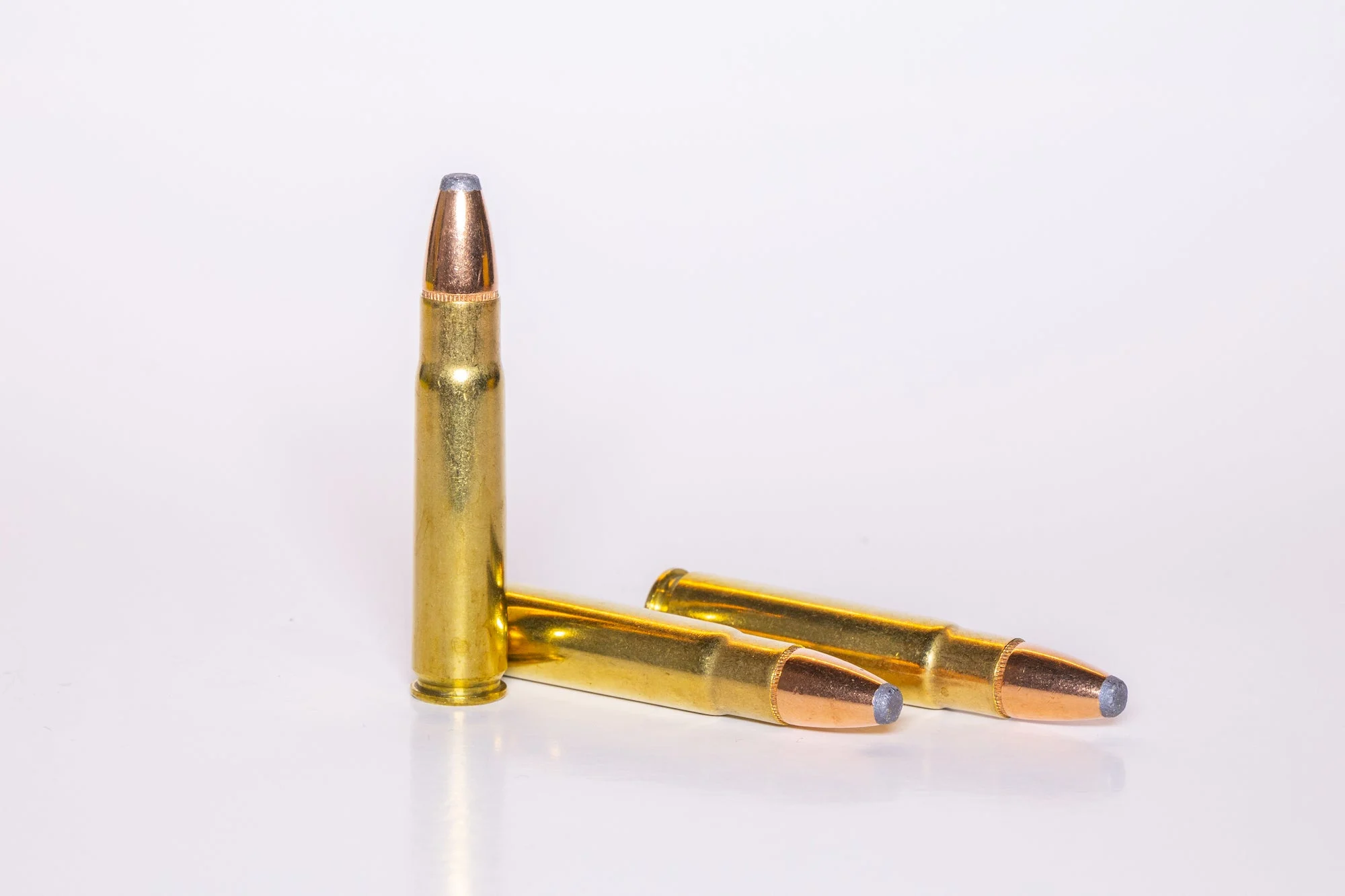We may earn revenue from the products available on this page and participate in affiliate programs. Learn more ›
I’ve been writing about guns for more than a quarter century, and one of the most common questions I get asked is, “What’s your favorite cartridge?” My first custom bolt-action rifle was chambered for the 35 Remington, and when I tell folks that it’s my favorite, they look at me like a cow looks at a new gate. How could a modern-day gun writer favor a cartridge that’s nearly 120 years old over the hard-hitting, flat-shooting cartridges of today? Maybe it’s the hillbilly in me. But, more likely, it’s because the 35 Remington works where I mostly hunt. Unfortunately, as I write this, the 35 Rem. is on its way out.
Don’t start throwing rocks and demanding Field & Stream fire me or shove bamboo shoots under the nail of my trigger finger. This is not news I’m happy to share. But the tarot cards have been played. Before you—pardon the pun—go ballistic, let me explain my prediction, and what I mean by, “on the way out.”

The author with a big-woods buck he took with a 35 Remington. Richard Mann
The History of the 35 Remington
The 35 Remington, which is a rimless cartridge, has a stellar reputation. Those who use it, swear it’s more effective on deer and bear than the 30-30 Winchester and damned near anything else. But what you may not know is that the 35 Remington was never intended to be a lever gun cartridge. It, along with the 25, 30, and 32 Remington cartridges, was created for Remington’s Model 8 autoloading rifle. It was also later chambered in Remington’s Model 14, 141, 760, and 7600 pump-action rifles, and in their Model 30, 600, and Model Seven, bolt-action rifles.
The cartridge was so popular Winchester even chambered it in their Model 70. Savage put it in their Model 170 pump and Mossberg used it in their Model 472 lever gun. But it wasn’t until 1953 that the 35 Rem. found its home. That’s when Marlin chambered it in their Model 336 lever action. In 1982, Winchester tried to compete with Remington’s 35 by introducing the 356 Winchester. Even though the 356 was ballistically superior, Remington’s old 35 won out and proudly lived on in Marlin’s lever gun until 2020 when Remington/Marlin went bankrupt. This January the new Marlin announced the return of the Model 336. And while they say they’re going to chamber it for 35 Remington, there’s an up-and-coming cartridge that would be a lot easier for Marlin to build a rifle for.
Enter the 360 Buckhammer

The 360 Buckhammer (bottom) hits a smidge harder than conventional 35 Remington (top) loads. It can do this because it’s loaded to a pressure that’s almost 50 percent higher. Richard Mann
This January, Remington announced a new cartridge called the 360 Buckhammer. It’s nothing more than a 30-30 Winchester case with the shoulder blown out to accept a 0.35-caliber bullet. Ballistically, it has a slight edge over the 35 Rem., mostly because it’s loaded to a higher pressure: 50,000 psi as opposed to 33,500 psi. Because of this, the 360 Buckhammer can push a 200-grain bullet to around 2170 fps, which is about 100 fps faster than conventional 35 Rem. loads. (However, for all you 35 Remington lovers out there, Buffalo Bore offers a Heavy 220-grain 35 Remington load at 2200 fps!)

Richard Mann
As of today, the only company manufacturing a 35 Remington rifle is Henry, and they offer just one. But they’re offering three lever guns and one single-shot rifle in 360 Buckhammer. Why does this matter? Well, the 360 Buckhammer is a straight-walled cartridge. This means it’s legal for deer hunting deer in more states than the 35 Remington. And if you’re hankering for a 0.35-caliber lever gun, why would you buy one that you can’t use in as many places as the 360 Buckhammer?
Also, right out the gate, the 360 Buckhammer has almost as many factory loads as there are for the 35 Rem., of which there are only five. The 360 Buckhammer is only a month old, and there are already three factory loads for it. And I’ll bet an engineer at Federal is working on new Fusion loads for the Buckhammer as I write this. Consider this, when Federal introduced the HammerDown lever-gun ammo line, they said a 35 Rem. load was coming. Of course, the 35 Remington doesn’t have rim to receive the HammerDown taper like other lever-gun cartridges do, and maybe Federal already knew the 360 Buckhammer was in the works. For whatever reason, we’ve yet to see a 35 Remington HammerDown load and maybe never will.
The 35 Remington’s Bleak Future
I’m not saying you should trade your 35 Remington for a 360 Buckhammer. And I’m not saying ammo makers are going to stop producing 35 Rem. ammunition, or that hunters are going to stop killing stuff with it. What I’m saying is, with the 360 Buckhammer, gun stores will likely sell more new 360 Buckhammer rifles than new 35 Rem. rifles. Who knows, Marlin might even shelve the 35 Remington and offer the 360 Buckhammer in their 336 instead because it’s easier for them to produce. Since it shares the 30-30’s rim diameter, it’s a more straightforward conversion than the rimless 35 Remington. None of this is likely to change unless one or two things happen.
At some point, I think this straight-wall cartridge thing will run its course. Ultimately all these straight-wall cartridge States will open to other, if not all, rifle cartridges. If that happens the popularity of cartridges like the 360 Buckhammer and 350 Legend will dwindle, and those that want the better 35, will start screaming for the 35 Remington—but more likely, they’ll be more than happy with cartridges like the 7mm PRC.
The other thing that could happen—but won’t—is for some enterprising rifle manufacturer to offer a compact, lightweight, bolt-action rifle, chambered for the 35 Remington—a rifle like that still has a place in the hardwoods or thick pine forests where big bucks and big bears dwell. (Hey Ruger, how about a Ruger American Compact in 35 Rem?) You’ll pay top dollar if you can find a used Remington Model 600 or Model Seven in 35 Remington. And you’d have to sell your pickup truck or trade your firstborn for a used Winchester model 70 in 35 Rem.

The 35 Remington might live on amongst hunters, but we’re unlikely to see new 35 Remington rifles or loads introduced anytime soon. Richard Mann
Beyond that, I don’t think the 35 Remington has a future. I have a fantastic takedown Marlin Model 336 in 35 Remington built by master gunsmith Jerry Dove. It’s one of my favorite rifles. Not a season goes by when I don’t carry it to the woods. Buckhammer or not, that’s not changing. But it’s almost certain that the new crop of hunters we have today will likely never own a 35 Remington. In a short time, there may be only a few of us left that even know the 35 Remington ever existed.
Read Next: 5 Forgotten .35s: Are These Once-Great Big Game Cartridges Doomed?
If cartridges had feelings, I’m sure the 35 Remington’s would be hurt. There’s a new kid on the block, and they’re getting all the attention. But cartridges don’t feel anything, even when they’re praised, cussed, or teased like the 6.5 Creedmoor. It’s the hunters who have all the emotion. While you’re cussing and wiping the tears from your eyes, one thing’s for sure, the 35 Remington was the original buckhammer, and it’s still one of the best moderate-range big game cartridges ever devised. When they bury me, they can stick a single, well-polished, 35 Remington cartridge in my pocket. I just might need it for hunting on that higher plane.


